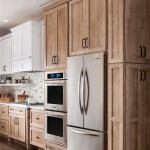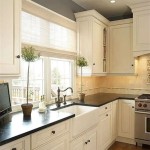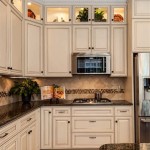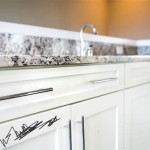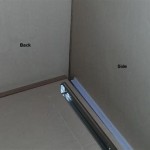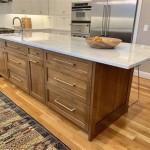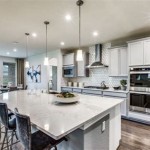Panda Kitchen Cabinet Assembly Instructions: A Comprehensive Guide
Assembling Panda kitchen cabinets offers a cost-effective solution for renovating or upgrading kitchen spaces. These cabinets, often flat-packed for convenient transport, require careful and methodical assembly. This article provides detailed instructions and guidance for successfully assembling Panda kitchen cabinets, ensuring a durable and functional kitchen storage solution.
Prior to commencing the assembly process, it is imperative to conduct a thorough inventory of all components. This includes cabinet boxes, doors, drawer fronts, hardware (hinges, screws, drawer slides), shelves, and any accompanying accessories. Compare the received items against the packing list to identify any discrepancies or missing parts. Addressing shortages before assembly begins saves time and prevents frustration.
Furthermore, it is advisable to designate a spacious and clean work area. Covering the floor with a protective layer, such as a drop cloth or cardboard, prevents damage to the cabinet components during assembly. Having adequate lighting significantly improves visibility and accuracy when aligning and securing parts.
Key Point 1: Cabinet Box Assembly
The cabinet box forms the structural foundation of Panda kitchen cabinets. Typical construction involves assembling side panels, a bottom panel, and a top panel (or crossmember). The method of joining these panels varies depending on the cabinet design, but commonly involves screws, cam locks, or a combination of both. Regardless of the fastening method, precise alignment is crucial for creating a square and stable box.
For cabinets utilizing screws, pre-drilled pilot holes serve as guides. Apply a moderate amount of pressure when driving screws to avoid stripping the holes or damaging the panels. If cam locks are used, insert the cam lock barrel into the designated hole, ensuring the arrow on the barrel points towards the hole for the cam lock bolt. Insert the cam lock bolt into the corresponding panel and tighten the cam lock with a screwdriver until it is securely locked. Over-tightening can damage the cam lock mechanism.
After assembling the main panels, install the back panel. This panel often provides additional structural rigidity to the cabinet. Depending on the design, the back panel may be secured with screws, staples, or nails. Ensure the back panel is flush with the edges of the cabinet box before securing it.
Once the cabinet box is assembled, check for squareness. Measure both diagonals of the box. If the measurements are equal, the box is square. If the measurements are unequal, gently adjust the box until the diagonals are equal. Securing the back panel will often maintain the squareness of the cabinet.
Key Point 2: Drawer and Door Installation
Installing drawers and doors is a critical step in completing the assembly of Panda kitchen cabinets. This process involves attaching drawer slides to both the cabinet box and the drawer box, as well as installing hinges on the cabinet box and the doors.
Drawer slides typically come in pairs, with one slide attaching to the cabinet box and the other attaching to the drawer box. Follow the manufacturer's instructions for precise placement of the drawer slides. Incorrect placement can result in drawers that do not open or close smoothly. Use a level to ensure the drawer slides are mounted horizontally.
Similarly, hinge installation requires careful attention to detail. Align the hinges on the cabinet box and the door, ensuring they are properly spaced and positioned. Use screws to secure the hinges, taking care not to over-tighten them. After installing the hinges, test the door's swing to ensure it opens and closes smoothly. Adjust the hinges as needed to achieve proper alignment and movement.
Drawer fronts are generally attached to the drawer box with screws or cam locks. Align the drawer front with the drawer box before securing it. Ensure the drawer front is centered and flush with the surrounding cabinet frame. Test the drawer's operation after attaching the drawer front to ensure it functions correctly.
Handles or knobs are typically installed last. Use a template or measuring tape to accurately position the handles or knobs on the doors and drawers. Drill pilot holes before installing the hardware to prevent splitting the wood or damaging the finish.
Consider the soft-close mechanism during the drawer and door installation. Soft-close hinges and drawer slides prevent slamming, extending the life of the cabinets. Ensure proper alignment and adjustment for the soft-close feature to function optimally.
Key Point 3: Shelf Installation and Adjustments
Panda kitchen cabinets often include adjustable shelves to accommodate various storage needs. The installation of these shelves typically involves inserting shelf supports (shelf pins or shelf clips) into pre-drilled holes located on the interior side panels of the cabinet box.
Ensure all shelf supports are inserted at the same height on both sides of the cabinet to prevent the shelf from tilting. A level can be used to verify the alignment of the shelf supports. Place the shelf on top of the supports, verifying that it sits securely and does not wobble.
The adjustable nature of the shelves allows for customization of the cabinet's interior space. Users can rearrange the shelves as needed to accommodate different sized items. When placing heavier items on the shelves, distribute the weight evenly to prevent the shelves from sagging.
Some Panda kitchen cabinets may also include fixed shelves. These shelves are typically secured to the cabinet box with screws or dowels. Fixed shelves provide additional structural support to the cabinet.
In addition to standard shelves, some cabinets include specialized storage solutions, such as pull-out shelves or spice racks. Follow the manufacturer's instructions for installing these specialized components. Ensure that these components operate smoothly and do not interfere with the operation of other cabinet features.
After completing the installation of shelves and other accessories, conduct a final inspection of the entire cabinet. Check for any loose screws, misaligned doors, or other imperfections. Make any necessary adjustments to ensure the cabinet is properly assembled and functions correctly.
Throughout the assembly process, consistently refer to the manufacturer's instructions for specific guidance on each step. Panda kitchen cabinets may have slight variations in design and construction, necessitating adherence to the provided instructions. Utilizing the correct tools and hardware is crucial for a successful assembly. Avoid using excessive force, as this can damage the cabinet components. If encountering difficulties, consult the manufacturer's customer support for assistance.
Maintaining a clean work environment further contributes to the smooth assembly of Panda kitchen cabinets. Regularly remove debris and packaging materials to prevent clutter and potential hazards. This also facilitates the organization of tools and components, streamlining the assembly process.
By meticulously following these instructions and guidelines, individuals can effectively assemble Panda kitchen cabinets, achieving a professional and functional kitchen storage solution. Attention to detail, patience, and adherence to the manufacturer's recommendations are key to a successful outcome. A properly assembled Panda kitchen cabinet not only enhances the aesthetic appeal of the kitchen but also provides durable and reliable storage for years to come.
Careful adjustment of doors and drawers after assembly is essential for optimal performance. Minor adjustments to hinge screws can correct door alignment issues, such as doors rubbing against each other or the cabinet frame. Similarly, adjusting drawer slides can improve the smoothness of drawer operation. These adjustments are often necessary to compensate for slight variations in cabinet construction or installation.
Proper handling of cabinet components during assembly also contributes to the overall quality of the finished product. Avoid dropping or scratching the cabinet panels. Use protective padding when setting components on hard surfaces. These precautions help to maintain the pristine condition of the cabinets and prevent cosmetic damage.
Taking the time to thoroughly understand the assembly process and carefully execute each step ensures a successful installation of Panda kitchen cabinets. The resulting kitchen storage solution will be both functional and aesthetically pleasing, enhancing the value and enjoyment of the kitchen space.

Kitchen Installation Installing Base Cabinets 6 Of 12

Kitchen Installation Introduction 1 Of 12

Kitchen Installation Attaching And Adjusting Doors Drawers 11 Of 12

Kitchen Installation Attaching And Adjusting Doors Drawers 11 Of 12

Rta Cabinetry Vs Custom Pkb

Kitchen Installation Introduction 1 Of 12

Modern Affordable Cabinetry Pbk

What Are Rta Cabinets Definition Benefits More

Kitchen Installation Installing Base Cabinets 6 Of 12
Panda Kitchen And Bath Of Nj Cabinet Distributor In Ridgefield New Jersey 07657
Related Posts

